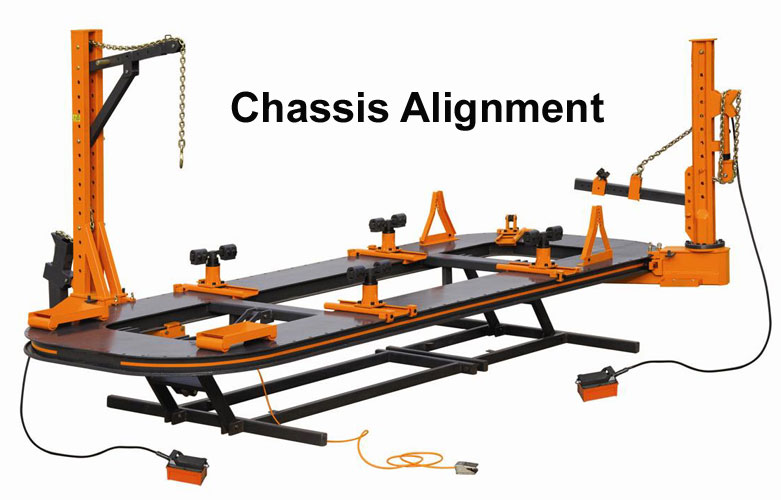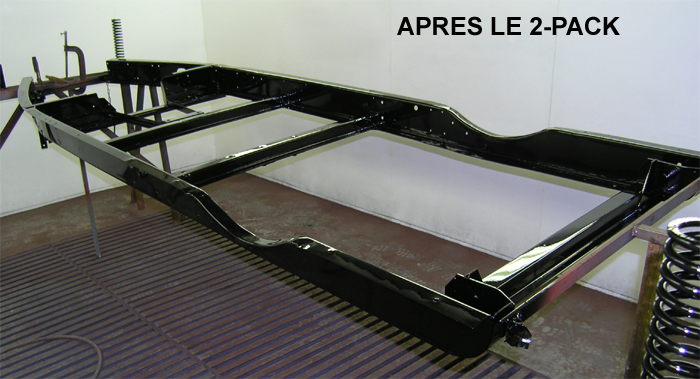THE DELIGHTS OF A FLEXING CHASSIS
by Lorne Goldman (published in MSCCC's Blurb, Spring 2016)
At the risk of being controversial........
Experts, engineers and students of automotive technology all
herald the
advantages of a stiff chassis. Logic is on their side. Without an absolutely
rigid foundation, it
is impossible to apply theories or componentry with a certainty of
success and identical result. Without rigidity, there is no way to guarantee
that even the same models will respond to the same factors in the same
way. As well, a
flexing chassis will react differently to different engines and
different add-ons. The flexing chassis will also wear and change over time, with or without usage. And as it
changes, it will incrementally change the performance of every
component attached to it. It will also both points of
strength and weakness which will allow forces to concentrate and cause
unhappiness a specific point. Cars with a flexing chassis will have a tendency to
squeak and groan without constant owner attention and despite efforts to
muffle this with the application of great gobs of factory goo. A flexing chassis will absorb more of the power produced rather than getting it to the ground.
 The degree of chassis flex will also be compounded on convertibles, cabriolets or roadsters because of their lack of a strenghtening rigid roof. Several prominent Morgan dealers have confidentially confided to me that only
25% of new Morgan
classic chassis arrive within correct specification and alignment. Even GoMoG recommends that a
replacement chassis be delivered to the local chassis straightener (rather than directly to the buyer) so that they may
be tested and corrected before installation.
The degree of chassis flex will also be compounded on convertibles, cabriolets or roadsters because of their lack of a strenghtening rigid roof. Several prominent Morgan dealers have confidentially confided to me that only
25% of new Morgan
classic chassis arrive within correct specification and alignment. Even GoMoG recommends that a
replacement chassis be delivered to the local chassis straightener (rather than directly to the buyer) so that they may
be tested and corrected before installation.
Consequences
But each classic Morgan has a flexing chassis and an open top. Each will be different, something
that has been mentioned often for decades by Morgan owners, with rueful pride and frustration but the consequences of this are still not fully understood, even by enabled owners.
Consequent common sense dictates that each
Morgan must be individually tweaked
by trial and error and this process must be on-going as a flexing chassis changes over
time with the interaction of its parts and the stress on the metal. Therefore intervention
must express
itself differently with every car. Ideally, each car must have
someone
specifically and fully familiar with it to best respond to its needs
and changes. After
400,000 kilometers and twenty years of mechanical and driving
interaction with many classic Plus 8s, to this I can add scores of others that I have helped copy to a template, I can attest to truth of these comments. Despite 10,000s spent, none
Morgan can never be precisely made to handle like another. Of course, they all
mightily improve,
but they becomes exactly identical. Uniformity and predictability with a flexing chassis
is impossible. The flexing chassis is the most salient characteristic of a
classic Morgan.

Too often, poor or
non-existent maintenance will convince owners that there are problems
with car rather than with their lack of understanding the car. They soon become easy prey for snake oil
salesmen promising them a modern panacea. Even installing dealers can be sadly co-opted, and obey the GoMoG Law of Expenditure: "The likelihood of a car enthusiast reviewing anything he has already purchased with passionate approval is directly related to how much money he spent on it." There is ample evidence that gratuitous technology has deskilled and dumbed down the species.
On the happy side, with a flexing chassis, the ENTIRE car reacts
to road anomalies. When a Morgan is properly sorted, they
become downright sensuous. Never experienced anything like it another car! The flexing chassis acts as a major part of the
suspension dynamic. They are one of the primary reasons for the legendary Morgan
permasmile. To get there, aside from luck, it requires
each owner to reflect his and his
car's indviduality in tweaking it by trial and error. No other
route makes sense. Interactive
owners, to a man, will all have tales about how replacement
parts or
new "bespoke" components had to be adjusted to fit and function. This encourages the development of an
understanding between
these owners and their Morgans that results in solid reliability and great joy, something that used to shared through clubs and forums.
I never found anything in the automotive world like it!
Yet there are those who wish to eliminate on of the most distinctive
charms of a car that has lasted 80+ years. They sell one-size-fits-all
solutions which makes no sense on a Classic Morgan. The design for
THEIR car and can succeed, but it is no guarantee for another. Hit or
miss without any certainty that the result will help or harm or please
the different dynamics of another car or the tastes of another owner.
The most
experienced Morgan suspension specialists cross themselves and look to
the heavens when approached by these newbie "experts"! (wry smile)
But there is predatory profits in these "solutions". It is
irrestible to some looking for money and/or guru status. Buyer beware.
There has not been a single week in the last few years that I
have not been responding to a frustrated someone trying to get their
Morgan back on the road after a misguided installation of one of these.
They are merely too embarrased to publicly warn their brethren after
all the hype. In my case, I have had to develop a tough skin and
I am not selling anything. (sadly wry)
From a safety point of view, a flexing chassis absorbs impact
force, sacrificing itself to save its occupants. Many (including my wife and I) owe our lives to
the Morgan flexing chassis. Why play games with that?
In sum, the simple Morgan Classic responds robustly to intervention.
There is a buffet of common sense ideas that have been discovered over
the last 80 years..most are inexpensive, some are less so (like
better tyres). Some combination will work for your car. But for older
cars, poor maintenance and care is normally the reason for a sad ride.
For newer cars, Factory trends have made a compliant suspension more
difficult to achieve as easily. But all Morgans, though different, can
attain exactly the ride and handling each owner wants.
There
is a wonderful Peter Morgan anecdote that is germane here. Some 70 years ago
he slapped shocks to the Morgan front, fit alongside the kingpin springs,
just as they are today. When asked whether they
improved the handling or the ride, PM shrugged, indicating they had no
effect that he could discern. But he confided that buyers were
concerned as they saw them on other, different cars...so he added them.
One day, for your own amusement and in memory of Peter Morgan, remove your front dampers and go for a test drive.

 The degree of chassis flex will also be compounded on convertibles, cabriolets or roadsters because of their lack of a strenghtening rigid roof. Several prominent Morgan dealers have confidentially confided to me that only
25% of new Morgan
classic chassis arrive within correct specification and alignment. Even GoMoG recommends that a
replacement chassis be delivered to the local chassis straightener (rather than directly to the buyer) so that they may
be tested and corrected before installation.
The degree of chassis flex will also be compounded on convertibles, cabriolets or roadsters because of their lack of a strenghtening rigid roof. Several prominent Morgan dealers have confidentially confided to me that only
25% of new Morgan
classic chassis arrive within correct specification and alignment. Even GoMoG recommends that a
replacement chassis be delivered to the local chassis straightener (rather than directly to the buyer) so that they may
be tested and corrected before installation.